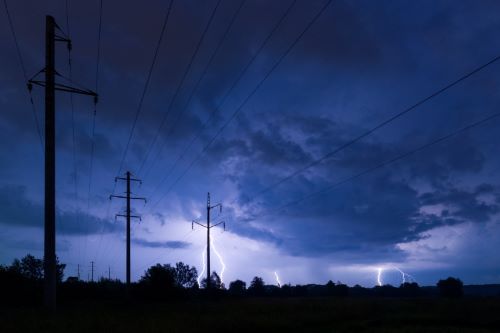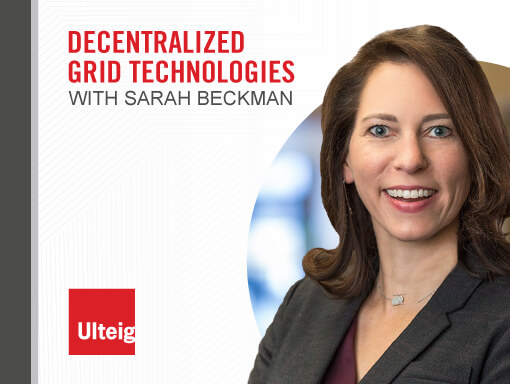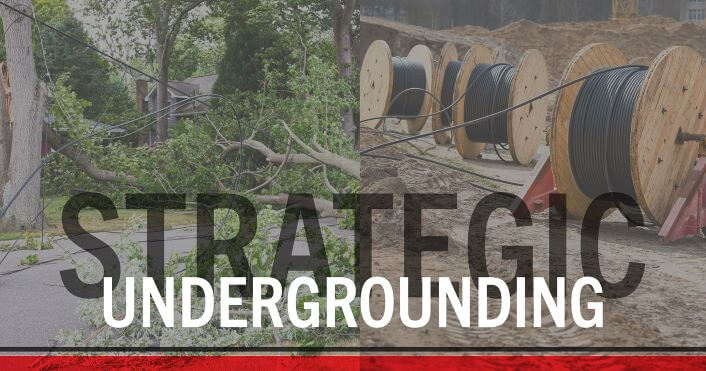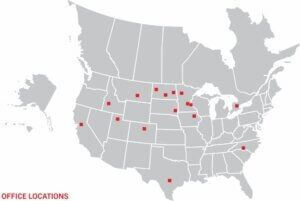Energy Solutions for Extreme Weather Conditions

November 21, 2023
Climate change is accelerating, bringing with it a marked increase and intensity in both the frequency and severity of high-impact, low-probability extreme weather events. Hurricanes, flooding, wildfires, high winds, ice storms, unpredictable, unseasonably high or low temperatures — no matter the time of year or location, their threat and subsequent impacts are significant across several sectors, including the entire energy industry.
Any time a major weather event or natural disaster occurs, power lines, substations and other critical electrical infrastructure and equipment are susceptible to, and suffer, damage, sometimes irreparably. At the minimum, this can disrupt service, and at worst, leave people without the necessary power and amenities they need to survive.
To ensure the robustness of our power grid against extreme weather conditions, we need a call for comprehensive, forward-thinking strategies. Fortunately, from modern grid designs to new monitoring technologies, there are solutions to a more resilient system.
Weathering the Impact of Extreme Weather
The most immediate and evident impact of extreme weather conditions on the power grid and energy sector is service disruption. Damaged power lines and equipment often result in outages lasting from several days to weeks. While not all damages result in outages to customers, they can strain the system by necessitating power rerouting, leading to potential equipment overload and failure.
Beyond the immediate, tangible impacts, they also have long-term effects on the energy sector. During severe weather events, the increased demand for energy can drive up wholesale pricing and system demand, while the system is under the most stress. Weather events may also require equipment derating to accommodate major temperature shifts, which limit available capacity on the grid.
The Challenge for Utilities
Utility providers have a primary goal of providing safe, affordable and reliable electrical power for customers, but this becomes increasingly challenging as weather events become more common. Utilities are frequently evaluated based on reliability and resiliency metrics (which measure the number, frequency and duration of outages on their system), and with unpredictable weather, these become harder to maintain. These metrics include:
- CAIDI (Customer Average Interruption Duration Index)
- SAIDI (System Average Interruption Duration Index)
- SAIFI (System Average Interruption Frequency Index)
Preparing for the Unpredictable
As the energy industry confronts the escalating threat of weather events, the need for resilient infrastructure becomes increasingly clear. Adapting to this challenging landscape requires an innovative approach through some of these energy solutions:
Vegetation Management and Microgrids
Effective vegetation management is integral to energy solutions, as a majority of outages during a storm or other weather incident are due to damaged trees coming into contact with power lines. This approach can minimize the likelihood of service disruptions due to fallen trees or branches.
Microgrids — small localized grids that can operate independently from the larger utility grid — offer another solution for ensuring power supply. In certain locations, establishing such microgrids can provide customers with an added layer of protection against outages.
Wildfire Detection and Sensor Technology
Early detection of wildfires can greatly reduce their impact and improve grid resiliency. As several technology companies embark on piloting wildfire detection technology, they can allow for early identification of wildfires & conditions which make wildfires more likely, dramatically improving response times and mitigating potential damage.
Adding sensors to power lines to measure real-time capacity and performance of the grid is another emerging, dynamic technology solution. During times of peak demand due to extreme weather, utilities may elect to maximize power flows across the system using these sensors, rather than relying on static line ratings which have historically been used but fail to account for changing environmental conditions.
Transmission planning and build-out also play a crucial role in improving regional reliability. Constructing long-distance, inter-regional, transmission lines can decrease grid congestion and provide access to different sources of energy.
Ulteig’s Proactive Approach
The best way to combat the effects of extreme weather is to plan for it. With climate change, event frequency is increasing, so utilities need to recognize this and design their system to higher standards. Ulteig lends support through numerous solutions:
- Design Evaluation and Implementation: We evaluate existing design criteria and identify ways to improve resilience against severe weather events based on historical weather data, utility practices and probability of extreme events. This process considers a variety of scenarios, from designing power lines to withstand broken wire cases, to preparing for higher average wind speeds and heavier ice storms.
- Storm and Wildfire Hardening: Rebuilding and undergrounding lines, plus implementing different conductor types makes the grid more resilient to wind effects and tree damage. A thorough evaluation of the current system highlights areas of significant risk, aiding utilities in prioritizing their investments effectively.
- Grid Modernization: Our modernization solutions also enhance monitoring capabilities and sectionalize major line segments. Advanced Metering Infrastructure (AMI), Fault Location, Isolation and Service Restoration (FLISR) and Non-Wires Alternatives (NWA) make the grid quicker to respond to weather events and are better equipped to isolate failures/outages to restore power more quickly to waiting customers.
Weathering the Future
As many parts of the electric grid near their end of service life, and the strain from environmental loads due to extreme weather events becomes more significant, combined, they ultimately reinforce the need for continuous investment in reliability and resilience.
In an era defined by climate change, the proactive solutions offered by Ulteig are more vital than ever. To explore how Ulteig can help your organization increase its resilience, contact us today for a consultative approach on solving this major challenge.
Together, we can shape a more resilient, sustainable, reliable energy future.
WHAT MAKES ULTEIG DIFFERENT?
From global energy producers to locally funded cities and private developers to government agencies, the clients we serve encompass a broad range of relationships and projects. Find out why Ulteig is a leader in the engineering industry.
Contact Us



